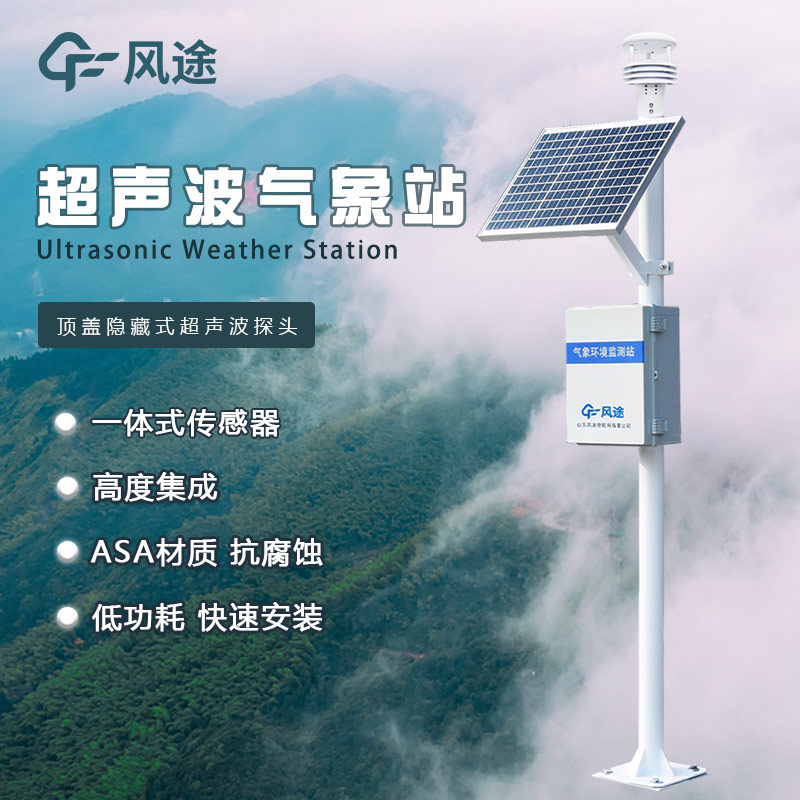Shandong Fengtu IOT Technology Co., Ltd
Sales Manager:Ms. Emily Wang
Cel,Whatsapp,Wechat:+86 15898932201
Email:info@fengtutec.com
Add:No. 155 Optoelectronic Industry Accelerator, Gaoxin District, Weifang, Shandong, China

Sales Manager:Ms. Emily Wang
Cel,Whatsapp,Wechat:+86 15898932201
Email:info@fengtutec.com
Add:No. 155 Optoelectronic Industry Accelerator, Gaoxin District, Weifang, Shandong, China
time:2024-01-25 17:30:44 source:Weather Station viewed:374 time
Micrometeorology refers to small-scale climatic features in the near-surface atmosphere and soil that are triggered by specific configurations of the subsurface. These features are usually reflected in individual meteorological values or individual weather phenomena (e.g. wind, rain, fog, frost, etc.), but changes in these elements do not significantly affect the large-scale weather and climate.
In the near-surface atmosphere, certain climate factors are enhanced at specific locations due to factors such as topography, which may exceed the limits of ice or wind conditions or normal growing conditions for crops designed for that area. In this case, if these climatic factors may jeopardise the normal functioning of production and living facilities or agricultural production, the location is known as a micrometeorological site.
In other words, a micrometeorological site is a small area of climate anomalies that may pose a threat to production and living facilities or agricultural production due to a specific configuration of the subsurface.
In order to better address these challenges, we need to enhance real-time monitoring of micrometeorology. Through the installation and use of advanced meteorological monitoring equipment, data from individual micrometeorological sites, including key parameters such as temperature, humidity, wind speed and precipitation, can be obtained in real time. These data can help us better understand the local climate conditions and predict future weather trends, so that we can take appropriate measures to cope with possible disasters.
The Micro Weather Station is an advanced weather monitoring device that integrates five sensors, including wind speed, wind direction, temperature, humidity and barometric pressure, to achieve integrated monitoring of these five environmental elements. It can also carry a variety of other sensors as required to further expand the diversity of monitoring data. The characteristics of this micro-weather station enable it to be used in a variety of environments and places, such as meteorological monitoring, urban environmental monitoring, wind power generation, marine vessels, airports and bridges and tunnels.
The Micro Weather Station offers a high degree of integration and reliability, as well as extremely low power consumption and a compact size for quick installation. This allows it to be easily deployed in various outdoor locations for 24/7 monitoring of meteorological parameters. Whether it is continuous real-time data acquisition or long-term trend analysis of meteorological changes, the Micro Weather Station can provide reliable data support.
The Micro Weather Station can upload the collected data to the system platform in real time via RS485 interface or optional 4G module. This allows users to remotely monitor and access data to meet a variety of needs such as city services, disaster prevention and mitigation. This ability to transmit real-time data makes the micro weather station irreplaceable in responding to unexpected weather events and preventing disasters.

Monitoring wind speed and direction is extremely critical for multiple industries such as fisheries, meteorology, industry, mining and healthcare. As wind power technology evolves and environmental standards improve, the demand for accuracy and performance of wind speed and direction measurement equ...
weather station for car is a compact vehicle mounted device that measures wind speed and direction with an integrated sensor module....
water quality detector uses chemical, physical or biological reactions to measure conductivity, dissolved oxygen, pH, COD and other parameters, suitable for monitoring natural water, surface water or groundwater quality....
Soil moisture monitoring techniques fall into three main categories: direct measurements, matrix potential measurements and non-contact indirect measurements.Direct measurements: moisture content is calculated by weighing and drying soil samples, or measured directly using instruments such as neutro...